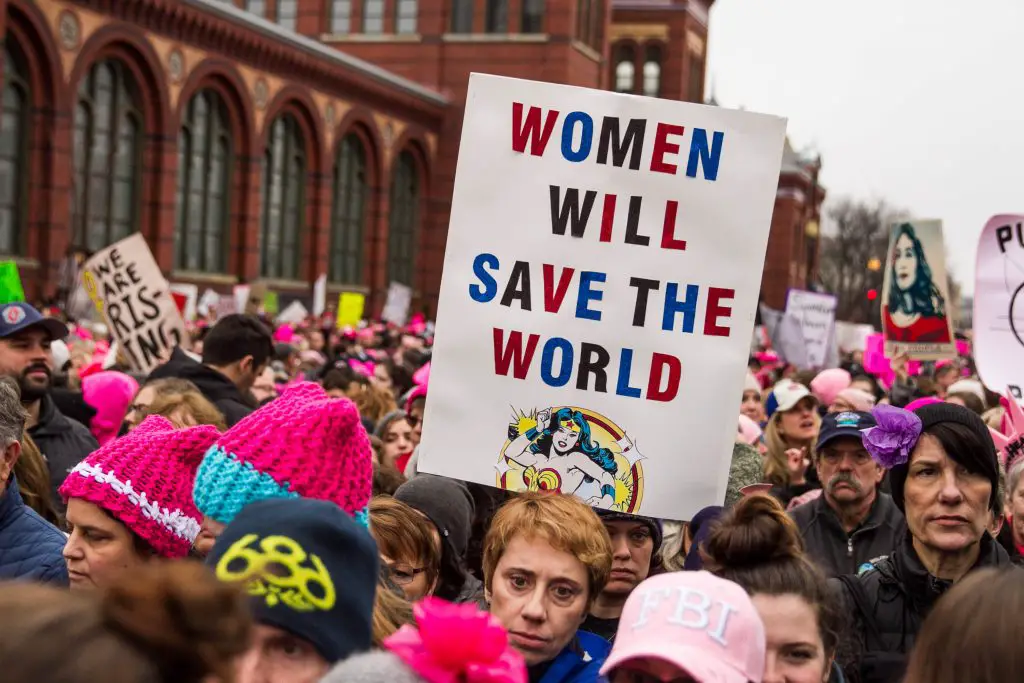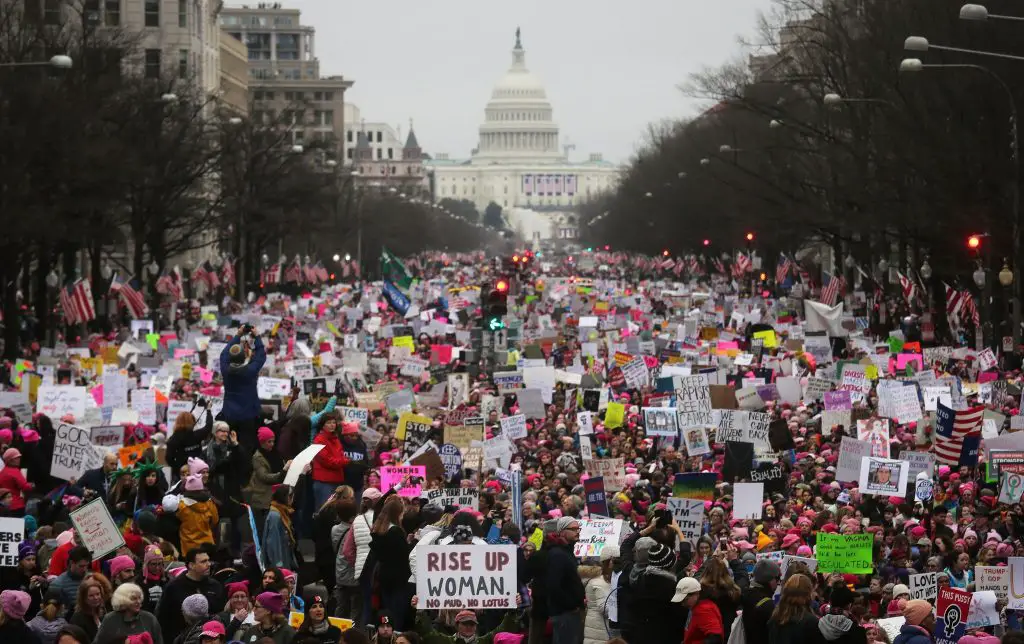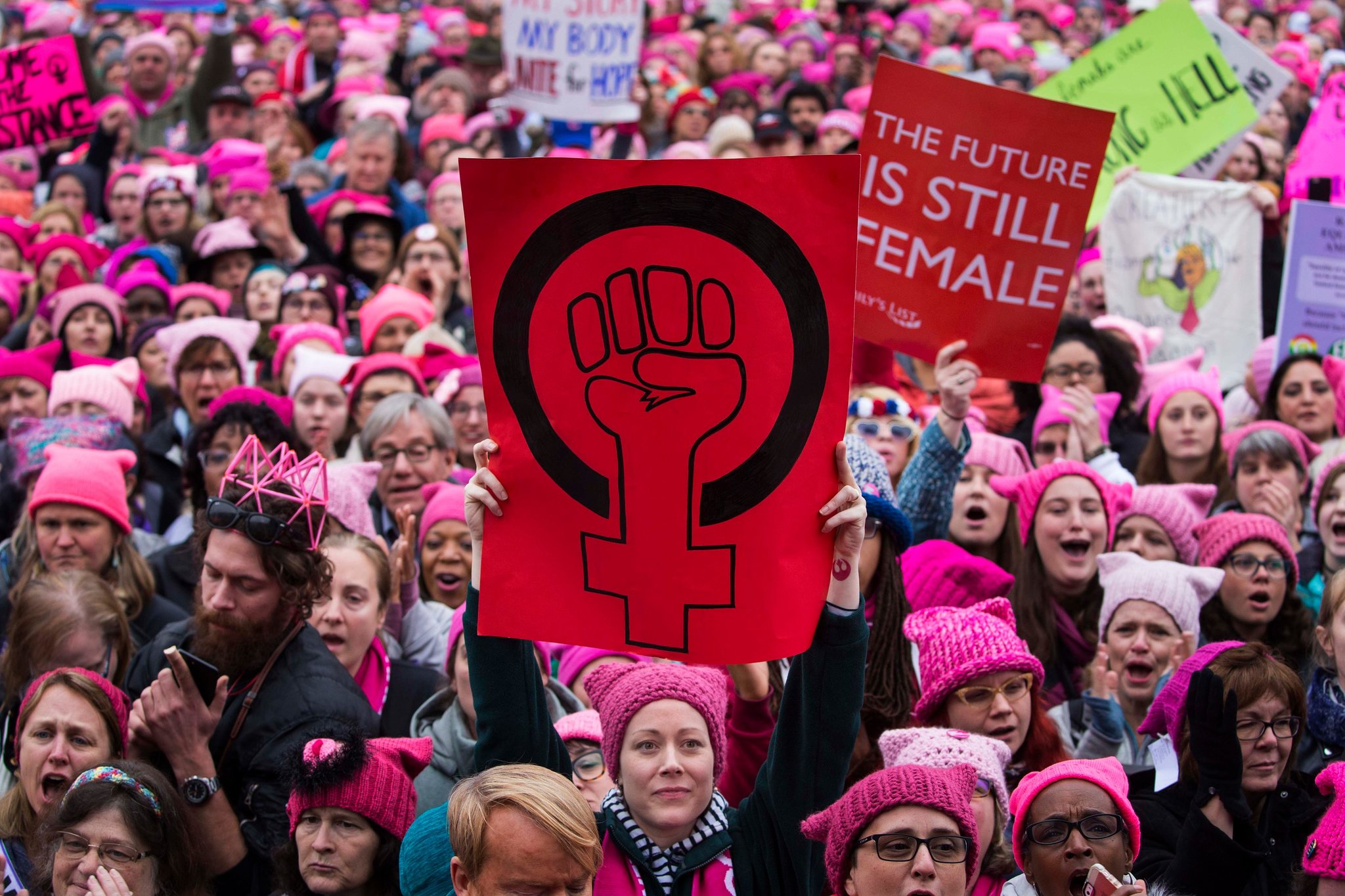The first time I heard the word “feminist” it was thrown at me as if it was a bad word. My father is a middle-school history teacher, and the two of us bonded in my earlier years through our mutual adoration of important figures from America’s past.
He preferred people like Teddy Roosevelt and Abraham Lincoln, while I related more to Eleanor Roosevelt and Abigail Adams. This came to bite my dad in the butt when I was his student at age 13, and I managed to turn every major class discussion about the founding fathers into a debate about where the founding mothers were in our history books.
That’s when one of my classmates said it, voice dripping with sarcasm, “Alicia, you’re such a feminist.” I hung my head in shame in that moment and didn’t know how to recover from such a negative label.
I asked my grandmother once, when I was working on a school project about women’s rights, if she considered herself a feminist. A mother of four who returned to the workforce at a time when women were expected to stay at home with their children, I thought it would only make sense that she connect with this term. As soon as the word left my lips, though, my grandmother’s jaw dropped. Her cheeks reddened, her mouth spluttered and she refused to make eye contact with me. “Well, I never!” she managed to say at last, and then the conversation was over.
“Feminists are radical bra-burners,” my mother, an independent business-owner and the higher-wage earner between my two parents, once said to me. “No upstanding woman in her right mind would want to be associated with that group.”

Then, on January 22, 2017, this highly disputed word brought over 500,000 people of all generations, creeds and identities together at the Women’s March on Washington, D.C. The purpose of every person who marched was to make the new president take notice. “My instinct was to demonstrate to the new administration that women were a force to be reckoned with,” says Dr. Mary Ann Cain, a writing studies professor of 25 years at Indiana University-Purdue University Fort Wayne (IPFW).
Lauren Krull, a 22-year-old student of law and public policy at Indiana University, agrees with Cain’s words.
“The idea of a community coming together to resist Trump was important,” she says. “The march showed Trump, his administration and people around the country that it’s more than individuals who are standing up to the restrictive and discriminatory policies that he has promised us. It is a global community coming together and saying, ‘This is not acceptable.’”
The 2017 Women’s March on D.C. brought feminist individuals together in a way that has never been seen before in history.
Dr. Cain explains, “In the past, white, middle-class feminists have not always had their eyes on others whose oppression was linked to their privilege. But now the catch word is ‘intersectionality.’ That means that I check my privilege and reach out to other groups, such as those who seek racial justice, economic justice, immigration rights and so forth.
“The typical marcher on the Capitol was a woman, or woman identifying. My friends estimated that maybe 80 percent of the crowd was female. Everyone was peaceful, courteous, kind and seemingly aware that many, many issues were being represented and that diversity was a given. I heard that 35,000 to 40,000 disabled people joined the march, the largest number of rally participants in U.S. history. That’s because the organizers made a point to make the invitation and make the rally accessible. I saw the crowd part for wheel chairs and people clearly moving with difficulty. The organization was impressive and diverse after an initial blip with only white women at the helm. That was corrected quickly and effectively.”
Similarly, Krull echoes, “My favorite part of the march was chanting, ‘Show me what America looks like. THIS IS WHAT AMERICA LOOKS LIKE.’ It was a deviation from the common chant of ‘Show me what democracy looks like. This is what democracy looks like.’ This chant brought me to tears because the march was so diverse, just like the faces of all Americans. That will obviously stick with me for years to come. I felt empowered and encouraged in a way that I have not felt before.”

News sources like “The Washington Post” are calling this the start of a serious social movement. Women around the world are still wearing their pink pussy hats, and Cain and Krull are aware that this is only the beginning of the battle they’ve taken on. “The march kick started what I think all of us hope will be a united front of activism for the foreseeable future,” Cain says. “Now, instead of spending down time watching Food Network, I’m on Facebook filling out petitions, joining local groups and figuring out how I’m going to spend my time to make my political voice heard.”
Krull agrees, “The march was important because we showed Trump that we will not be quiet. It encouraged people in the fight for many different social justice issues. So many first-time marchers participated and were hopefully encouraged to keep participating. I plan on working with policy long-term and being an advocate for people through that work.”
In the 2014 launch of her HeForShe campaign, Emma Watson explained, “I decided I was a feminist [early in my life] and this seemed uncomplicated to me, but my recent research has shown me that feminism has become an unpopular word. Apparently, I am among the ranks of women whose expressions are seen as too strong, too aggressive, isolating, anti-men and unattractive. Why is the word such an uncomfortable one?”
The past few years have seen a great shift from the word that was once thrown at me like a slur to the beginning of something grounded in unity and opportunity. 2017 is bringing women together under a similar cause, and, as a result, the entire force behind the movement is being redefined. “The short answer is that feminism is about women’s rights, and women’s rights are human rights,” Dr. Cain says. “This is why we march.”
No matter what our political beliefs may be, may we all continue to come together to fight for a better human condition in 2017.

















